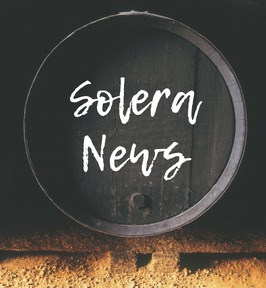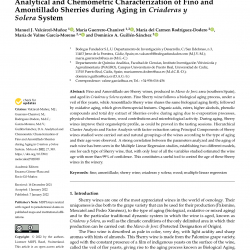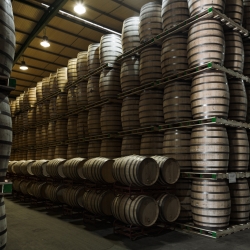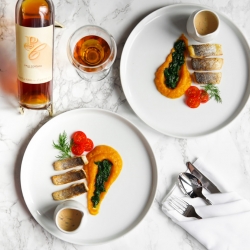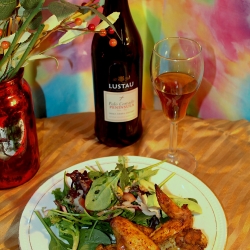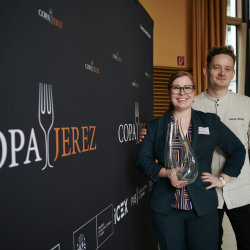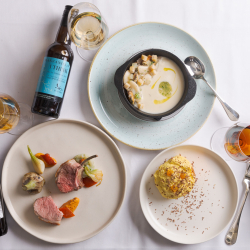Flamenco in Sherry Labels
 Firstly there were the unillustrated labels whose brand names alluded to Flamenco using gypsy words implying quality such as “Chipén” or the names of types of Flamenco song and dance such as “Martinete” or “Petenera”.
Firstly there were the unillustrated labels whose brand names alluded to Flamenco using gypsy words implying quality such as “Chipén” or the names of types of Flamenco song and dance such as “Martinete” or “Petenera”.

Secondly there were those which were lavishly illustrated in full colour with scenes of Flamenco festivities with various characters in full Flamenco costume sometimes accompanied by a guitarist or flirting bullfighters. There were also occasional pictorial references to Sherry.

The third group consists simply of women, presented in classic gypsy-andaluz costume, but there was another sub-group.
Portraits – either photographic or in paint - of famous contemporary singers and dancers were reproduced in color onto wine labels to take advantage of their fame to promote the wine. Their names were not included, though many would have been recognised. These labels were printed either with a plain background or a scenic one in a bar, patio or garden, usually with a table with a bottle and glasses of Sherry, and the woman would be wearing a dress with a train, flowers in her hair and a brightly coloured “mantón” or shawl. She would often be holding up a glass and looking the consumer in the eye to effect a close relationship.
 The popularity of labels of this type led to standardisation as the lithographic studios collated catalogs of pre-printed artwork, and the same label could appear on more than one brand. The only difference was the post-printing of the text. As time went by the illustrations of women became more synthetic and folkloric but they did convey to the export markets a picturesque, romantic Andalucía. This archetype seems to date back to late XVIII century engravings showing women similarly dressed, often gypsies or lower classes, but it became a lasting tradition.
The popularity of labels of this type led to standardisation as the lithographic studios collated catalogs of pre-printed artwork, and the same label could appear on more than one brand. The only difference was the post-printing of the text. As time went by the illustrations of women became more synthetic and folkloric but they did convey to the export markets a picturesque, romantic Andalucía. This archetype seems to date back to late XVIII century engravings showing women similarly dressed, often gypsies or lower classes, but it became a lasting tradition.
 With very few exceptions it is women who are featured in the labels. One simple reason is that men are attracted to them, and they are the principal consumers, especially in a Flamenco environment. There is also a clear symbolic connection between the character of the wine and the traditional feminine qualities. Women are associated with the lighter styles, mainly Manzanilla, and sweeter styles, and these are the most popular wines at Flamenco events and ferias.
With very few exceptions it is women who are featured in the labels. One simple reason is that men are attracted to them, and they are the principal consumers, especially in a Flamenco environment. There is also a clear symbolic connection between the character of the wine and the traditional feminine qualities. Women are associated with the lighter styles, mainly Manzanilla, and sweeter styles, and these are the most popular wines at Flamenco events and ferias.
While these classic label designs doubtless helped perpetuate the stereotypical image of romantic Andalucía, they were perfectly sound commercially in their day, and very beautiful.
A drastically reduced and translated version of “El flamenco en el etiquetado vinatero del Marco de Jerez” by Ana Gómez Díaz in her blog Desde el templo del Lucero
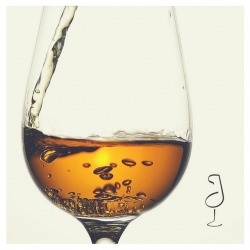

17 January 2017
